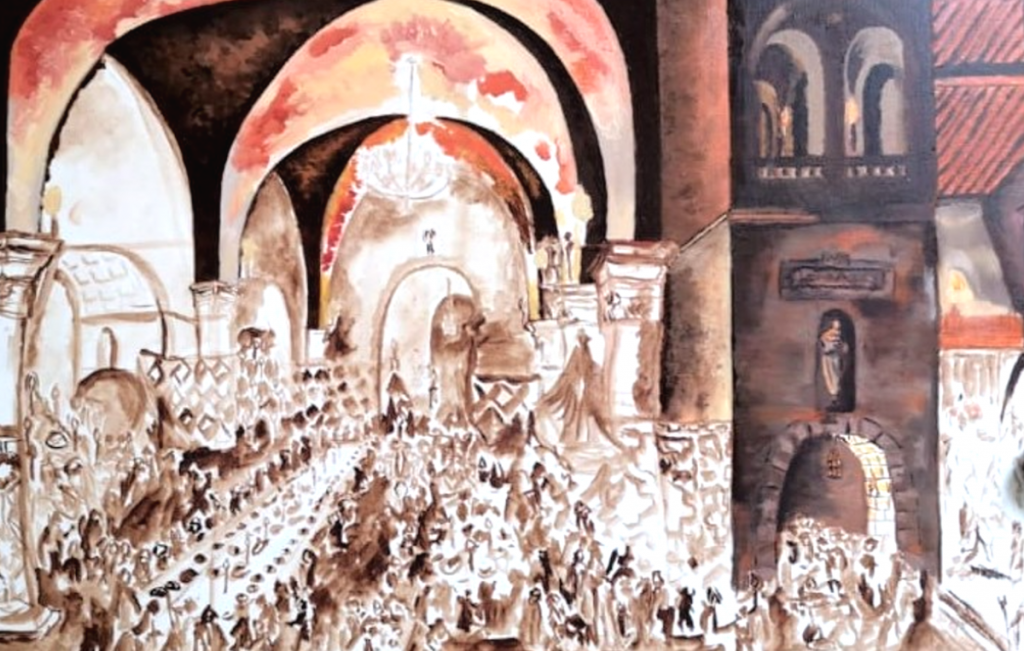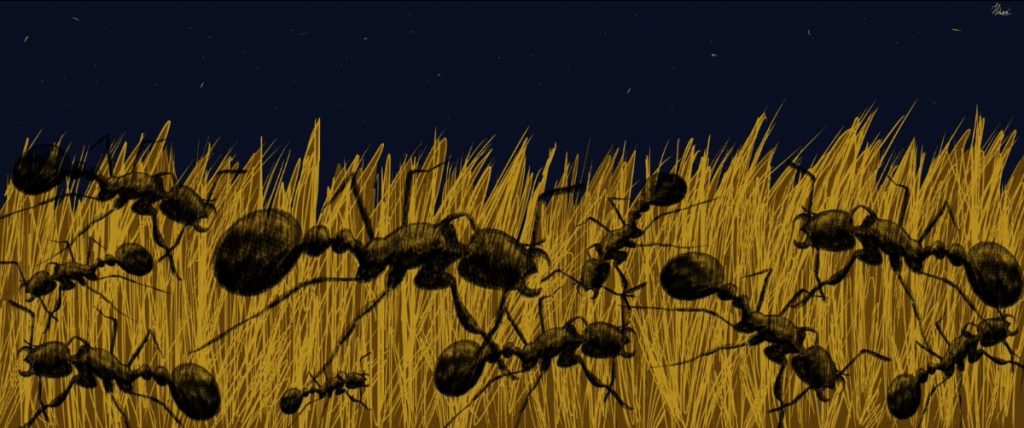Once upon a time it was pop, now it’s art history – Bianca and Gianna from Artpop Talk discuss art, pop & royalty. Their words are accompanied by the works of our very own illustrator, Laureen Lehoux.
Gianna and Bianca Martucci-Fink are the sisters behind Artpop Talk, a podcast about art and pop culture. They both work in art and art history as researchers, programmers and curators. Gianna is also an artist herself, while Bianca is focused on the curatorial and art historical. Artpop Talk is a community partner of culturala.
Since leaving the Royal Family and moving to the mothership of American popular culture, Prince Harry and Meghan Markle have reignited the conversation about royalty in the US. They’re playing a unique role against the usual and perhaps overstated cliché that “we don’t have royalty here, but we do have celebrities,” a self-aware proclamation of how Americans often treat their celebrities — like royalty. The media frenzy over the semantics of Harry and Meghan’s new status as American celebs may seem like the usual tabloid news, but it also holds historical significance.
Why would it be of any matter to art historians that the Duke and Duchess of Sussex are making American headlines? Why should they care that Harry Styles sang about a watermelon? Or that Lil Nas X made a music video where he slides down a stripper pole into a hellish landscape? Well, is it not true that everything which makes up art history was once contemporary?
The artworks and objects that we adore so much reflect types of popularity from their time. Just because Sandro Boticelli wasn’t spilling Medici tea for Florence’s Page Six, doesn’t mean his artwork wasn’t a reflection of the contemporary visual culture of his time.
Ironically, museums, art history, and popular culture have more in common than we might initially think. The art world runs as a parallel “Hollywood-esque” system. What makes pop-culture so appealing: the glamour, the wealth, the status, the capitalist nature of selling something to an audience – it’s the same system of popularity as what our museums and art historical lineage rely on.
Those of us who have been brought up in the art world (speaking from an American perspective) are usually taught to idolize the Western canon. We think, and talk, and write about those figures who now have celebrity status in the art world. More and more, the royal subjects and public figures found within works of art who were once the famed persons of their time, have fallen behind the recognition of the artist. But we have to do a better job of collectively recognizing how our own studies influence the greater public’s impression of our field.

The unfinished banquet (2021) by Laureen Lehoux. All rights reserved.
We’re not oblivious to why this happens. Unfortunately, it all comes down to the money. Which famous artist or work of art can museums advertise to visitors, what can be made into merchandise, what blockbuster exhibition will sell the most tickets, who is trending at auctions right now… questions that constantly circulate in popular realms of visual culture outside of the “fine arts.”
The art world has prided itself of a type of elitism (*cough cough, wink wink* sounds like Tinseltown…), however the arts have crafted a delicate veil of faux accessibility in the narrative that “art is for everyone.” Well, yes, we believe that art should be for everyone. Yet, art operates under the guise of democracy while pop-culture is completely transparent and scarily at ease in its capability to sell you something that’s unattainable. Both systems are cyclical, constantly churning out new critiques of whatever visual cues a new trend finds outdated.
The significance of Harry and Meghan today may feel separate from the art historical cannon, but don’t underestimate the precedent their imagery sets for future creatives, and the lineage that they already fall into within our visual histories hanging on museum walls. The strong connection between art and pop is fascinating, and we shouldn’t be looking at them as mutually exclusive — when in fact, they are one and the same.

The silent pack by Laureen Lehoux. All rights reserved.
We use cookies to make sure you get the best out of our presence, and by using our website, you agree to our use of cookies. For more information, read our Policies or reach out to us by email.